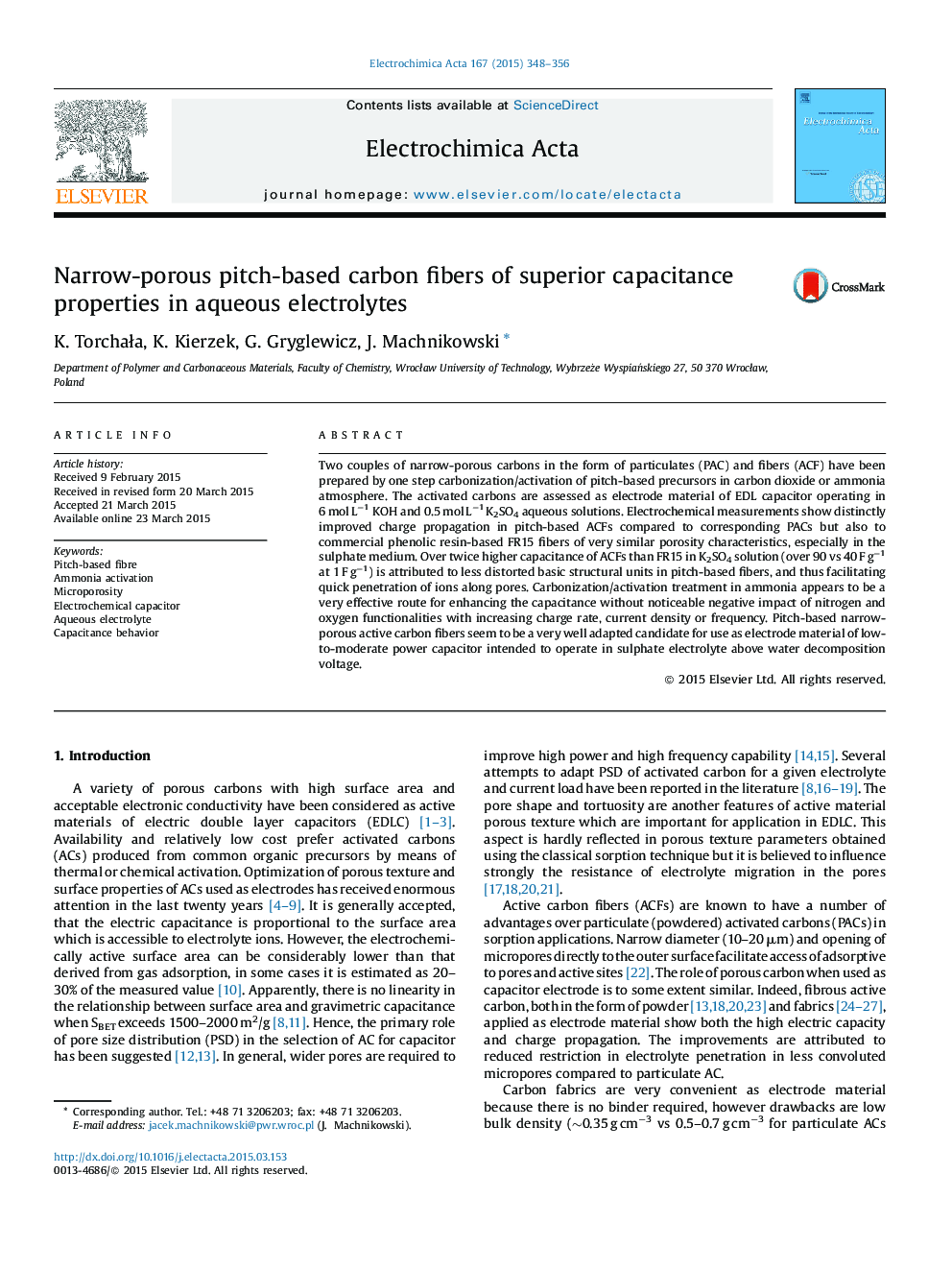| Article ID | Journal | Published Year | Pages | File Type |
|---|---|---|---|---|
| 184361 | Electrochimica Acta | 2015 | 9 Pages |
•Porous carbons were prepared by CO2 and NH3 activation of pitch powders and fibers.•Commercial phenolic resin-based active carbon fiber (ACF) was studied for comparison.•The electrochemical properties were assessed in KOH and K2SO4 aqueous solutions.•Pitch-based ACFs exhibit superior capacitance behavior in sulphate electrolyte.•Enhanced volumetric capacitance of functionalized NH3 activated ACF is revealed.
Two couples of narrow-porous carbons in the form of particulates (PAC) and fibers (ACF) have been prepared by one step carbonization/activation of pitch-based precursors in carbon dioxide or ammonia atmosphere. The activated carbons are assessed as electrode material of EDL capacitor operating in 6 mol L−1 KOH and 0.5 mol L−1 K2SO4 aqueous solutions. Electrochemical measurements show distinctly improved charge propagation in pitch-based ACFs compared to corresponding PACs but also to commercial phenolic resin-based FR15 fibers of very similar porosity characteristics, especially in the sulphate medium. Over twice higher capacitance of ACFs than FR15 in K2SO4 solution (over 90 vs 40 F g−1 at 1 F g−1) is attributed to less distorted basic structural units in pitch-based fibers, and thus facilitating quick penetration of ions along pores. Carbonization/activation treatment in ammonia appears to be a very effective route for enhancing the capacitance without noticeable negative impact of nitrogen and oxygen functionalities with increasing charge rate, current density or frequency. Pitch-based narrow-porous active carbon fibers seem to be a very well adapted candidate for use as electrode material of low-to-moderate power capacitor intended to operate in sulphate electrolyte above water decomposition voltage.
